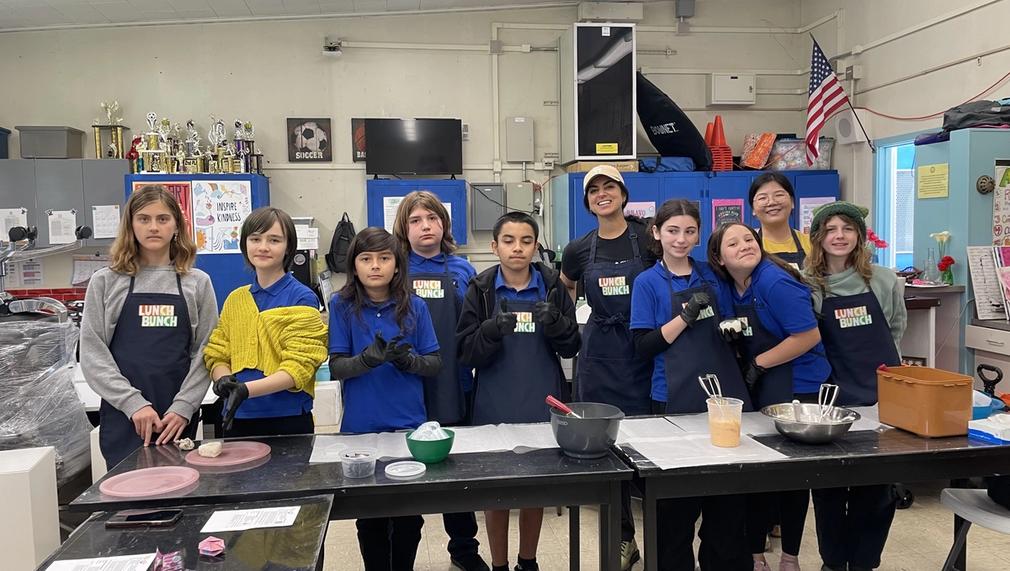Healthy Cooking Combines Science and Math
This grant will support LACER’s healthy cooking classes, which explore some of the many connections between cooking and Science, Technology, Engineering, Art, and Math! Cooking strives to inspire, educate, and celebrate the essential role that real foods, cooking, and nutrition play in promoting health and wellness. The cooking classes provide simple and adaptive cooking skills, as well as nutrition education.

What is the primary issue area that your application will impact?
K-12 STEAM education
In what stage of innovation is this project, program, or initiative?
Expand existing project, program, or initiative (expanding and continuing ongoing, successful work)
What is your understanding of the issue that you are seeking to address?
We seek to address the health disparities of LACER’s student population. 81% of our middle school students are economically disadvantaged. Children from impoverished backgrounds are more likely to experience food insecurity and a higher risk of poor physical and mental health, obesity, poor academic performance, and behavioral problems. Cooking classes are a way to apply and strengthen skills and engagement in math and science (STEAM) through hands on learning while developing applicable culinary skills and nutrition knowledge needed to live a healthier life. Students gain appreciation for healthy eating habits and the nutritional value of different foods, empowering them to make healthier choices. Students learn about the chemistry of cooking, such as how heat affects molecular structure of proteins and carbohydrates, while preparing delicious recipes. Math plays a significant role in cooking, from measuring ingredients accurately to understanding ratios and proportions in recipes.
Describe the project, program, or initiative this grant will support to address the issue.
The classes are called Healthy Cooking, they introduce students to food science and the study of the physical, biological (including microbiological) and chemical makeup of food. Students learn how science is an important and constant element in the culinary process. Foods are scaled proportionately, and combined in a certain order, to achieve desired outcomes. Chemical reactions occur in cooking through manipulation or emulsification. The control of heat and cold maximizes food quality and safety.
The classes allow students to experience science interactively. They connect their STEAM knowledge to everyday activities and events. As a result, they deepen their collaborative skills, creativity, critical thinking, communication, and understanding and interest in science.
Through our kitchen “experiments”, like making homemade butter, ice cream and jam, watching homemade cake batter rise, to name just a few, students learn to explore chemical engineering, Molecular gastronomy, enzymatic browning and working with ratios, proportions, temperature, volume and so much more.
Additionally, the classes use curricula that are consistent with scientific evidence of effectiveness in helping students improve healthy eating and physical activity behaviors.
Used are classroom instructional methods and strategies that are interactive, engage all students, and are relevant to their daily lives and experiences.
Describe how Los Angeles County will be different if your work is successful.
Hundreds of Los Angeles students will live a healthier life and share their knowledge with friends and family, therefore impacting hundreds more. The program does and will continue to establish school environments that support healthy eating and physical activity, by providing access to healthy foods and physical activity, and opportunities to do these things in safe spaces.
The program creates a school environment that encourages a healthy body image, shape, and size among all students and staff members, and the acceptance of diverse abilities.
While the program has been going on for many years, the goal is to extend the number of hours of class time at all the middle schools served and add the classes at three Los Angeles high schools.
What evidence do you have that this project, program, or initiative is or will be successful, and how will you define and measure success?
Program evaluation is done in several ways. The numbers of students who enroll in the program and their daily attendance is monitored. Students’ complete surveys every ten weeks. Parents are surveyed as well. Instructors monitor students’ reactions and comments on a daily basis. L.A.C.E.R. also conducts ongoing performance evaluations as observed by staff, counselors, and teachers from the regular school day program. L.A.C.E.R. will continue to undergo numerous outside program and audit evaluations through its work with Beyond the Bell to evaluate program effectiveness and impact.
Approximately how many people will be impacted by this project, program, or initiative?
Direct Impact: 500.0
Indirect Impact: 4,000.0